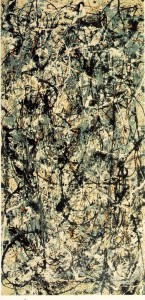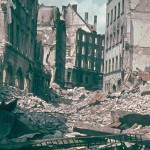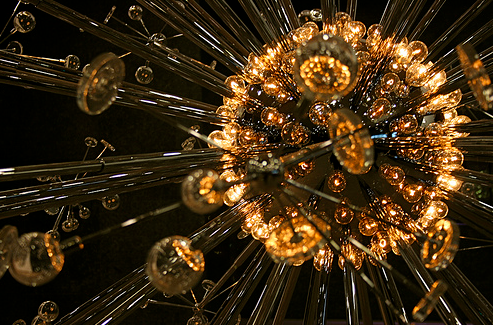Does Art Reflect Culture? How is art reflective?
Primarily this article explores how 20th century art reflected the culture around it
and discusses contemporary examples of how any made thing reflects the culture around it.
———————————————————————————————————————————————-
From time to time I have heard the expression that “art reflects the culture around it”. I was curious about what that saying meant, or if it was true and how it was true. I think that it might be helpful to start with a consideration of what role the artist fulfils in society. Joseph Conrad declares that the role of the artist is
“To snatch in a moment of courage, from the remorseless rush of time, a passing phase of life, is only the beginning of the task.”
Revealing a sliver of life, even if it is only a shifting and flashing glance, to the audience is the substance and beginning of art. This is the job, the role, of the artist in society: to capture the momentary and transform it into something static and monumental. Art transcends time and space insofar as it takes a phase of life and pulls it outside of time, but it must also be referential of the time out of which it came. So it must reflect the time out of which it comes, but it must also speak across the ages. Therefore, art is reflective of the time out of which it is taken.
Furthermore, Aristotle reminds us that art arose out of an instinct–an instinct–for imitation. We learn by imitation to begin with, but later on we take pleasure in the art which imitates life or nature the best. That does not have to mean strict realism, it could encompass other styles of art which please the audience and bring them to understand something about life and being. Thus if art reflects life, it must follow that it could also reflect other things too, such as the culture or time in which it is placed.
It seems that the artisan of useful objects creates tools and equipment for life in the here and now, and only makes things which are currently in demand or which will become in demand. The useful art that is made is a great place to start if you’d like to see what the culture is like (or rather what the culture likes), but this is not the purpose of this article. I will briefly mention one thing: take cutlery for example. You can look at the history of silverware and find that today’s ideal cutlery falls into two categories: minimalist or disposable. Within disposable, the most sought after feature is compostability or at least being made of recycled materials, as Chipotle’s cutlery and other packaging is. If you look at cutlery from 100 years ago, you would be surprised to see how ornate it is and how many different types of forks and spoons there are for different eating situations and types of food. Today, common eating utensils are produced with “fast food” in mind, but with a contemporary twist. It is made to be used, and then be disposed of, but not “wasted” by making it compostable. There’s a movement towards convenience without the guilt of waste (which comes with use of regular plastic ware). Now if you look at re-usable cutlery, you are looking at mostly minimalist designs, especially the most expensive silverware is often pared down to a minimalist look with in-demand colors, like matte black or gold for example. Furthermore, within full cutlery sets, you will see that the options are also limited to large and small forks and spoons and a knife. So what would drive the changes in cutlery? My take on it: today’s culture is ever changing and fast paced, it demands we make so many decisions and not stop or slow down, at the same time, there is a deep concern for the impact of negative human behavior (greed, wastefulness, carbon footprints, etc.) on the environment. The most beautiful and most useful cutlery today is fashioned to alleviate decision fatigue and unburden our consciences. Although this is one example, you can begin to see how this same logic can be applied to many made things: phones, cars, bed frames, and more. Therefore, in contemporary useful art (made things), it is clear that it is produced for the contemporary end user and is thus a product of its time reflecting the culture around it.
But back to the original topic, I have some probing questions about it.
What evidence do we see of art reflecting our culture today? How is our culture present in the art that we see on a daily basis? What is the culture reflecting and is that reflection intentional? What are the objects that our culture values and are our cultural values reflected in the objects made today? How are we supposed to identify which pieces best or most essentially express the culture?
To what extent can a piece be said objectively to reflect the culture? The idea that a piece of art can reflect the culture seems to me immediately an opportunity for ideologues to grasp our attention: “Now see here! This piece is a perfect of example of [some view of the world] which should be [praised or blamed, imitated or avoided, etc.].”
Let’s take an example: Abstract Expressionism–to what extent did it reflect the culture? I believe it reflected at least some aspect of the culture quite well.
Indeed, there are many who would praise and even more (I think) that would blame Pollock’s “Cathedral” as evidence of what is right or wrong with art, but both can at least agree that in some ways it is an encapsulation of the culture at that time (1947 post WWII United States). Jackson Pollock was painting at a time when World War II had destroyed most of Europe and with it the cultural and historical art centers of the old world (specifically Paris and Munich). New York had thus risen to the status as the art capital of the world in the wake of the two world wars. Abstract expressionism in some ways is merely taking expressionism, as started in Munich in the early 1900’s, to its natural consequence. I point to the der Blau Riter movement headed up by Wassily Kandinsky and Paul Klee as being inherently modern and novel, trying to cast off the old world and its pre-conceived notions of what traditional canons of beauty are. Picasso is doing the same thing. In the early 20th century, they are reflecting that cultural split of old world and new world. But back to the Ab-Ex art: it is precisely because New York took a place in the world art scene’s spotlight after WWII that Pollock and Willem de Kooning (and others in the New York school) gained popularity and notoriety. Nevertheless, Pollock’s artwork reflects that new and inherently modern sense about life post WWII and life in the 20th century in general. An aesthetic of shock value, novelty, absent of meaning and intention, yet somehow strangely captivating and full of layers and interest.
Yet, to what extent was Pollock trying intentionally to create artwork which reflected the broader culture around it? I don’t actually think Pollock was really trying to do that at all. I think he was merely seeking a style to fill the need to express feelings and actions. In fact, he himself says, “a method of painting is a natural growth out of a need. I want to express my feelings rather than illustrate them. Technique is just a means of arriving at a statement” (from Jackson Pollock film by Hans Namuth). It just so happens that his paintings are a great reflection of the broader culture in the United States of newness and disconnectedness post WWII.
But then I started thinking about this. Although Pollock seems to be unintentionally reflecting his culture, many artists have been observing life, culture, and society for centuries, and attempting to reflect it. Some artists do this overtly (artists both living and dead), while others are either sublte or may not even realize the full extent to which their artwork reflects their culture.
I’ll give you an example of a glass artist alive today whose work explicitly remarks on how art reflects culture and identity. This glass artist has decided his pieces will literally reflect things! Many of his pieces are blown glass made into mirrors by pouring silver nitrate on it. Thus his mirrored glass pieces are literally reflecting things around them. Take for example this piece found in the Phoenix Art museum, by artist Josiah McElheny; It’s about the Big Bang, and it is called The Last Scattering Light. (See interactive Photos HERE.) Here you see a common cultural and scientific idea demonstrated or rather imagined and represented in glass and light. The glass orb on which the lights sit is a mirrored orb, thus reflecting everything around it and increasing the level of illumination. McElhenry describes his artwork thus:
…you stand in front of them, then suddenly you see yourself, but you see yourself overlayed with this pattern. It was this idea of this metaphor of what art is…the experience of art is a kind of fusion of the experience of yourself and the object…being a modern person is to examine yourself, to reflect on yourself and be a self knowledgeable person…an infinite narcissism of reflection…this is what the 20th century was.
Josiah McElheny is still alive today, and he was featured in the PBS show Art 21 titled Memory (start video at 38:39). He has a lot to say about this idea of reflection and how art reflects the culture. It’s quite worth your time. I really do enjoy what he has to say about modernity and what it means to be modern. Also, I think there is a lot to be said for how we understand artwork and impose our own identity on it as well. I do not think that it is all just mumbo jumbo art speak, but then again, I am an artist, so I guess I can tolerate it. You should at least give it a try, like a little kid going to a zoo and seeing all the little freaks and wonders in their cages. Then like a scientist try to understand them; to decipher their language. Maybe there’s nothing there to decipher, maybe there is, but nonetheless, trying to understand the art that is around you–I think it makes you a fine and noble person to do this.

Andy Warhol
American, 1928-1987
Campbell’s Soup Cans, 1962
Synthetic polymer paint on thirty-two canvases, Each canvas 20 x 16″ (50.8 x 40.6 cm).
I really think McElheny captures some crucial aspects of how art in the 20th century reflects the reflexive culture of narcissism. Andy Warhol examined this idea in his pieces of Pop Art that sort of mocked (in every sense of the word) the post-WWII consumer culture that wanted repeatable fabricated material things. Andy Warhol’s work clearly reflects (or mocks) the culture back on itself. Art merely gives the culture what it wants, but always on the cutting edge. Even down to the level of the materials that he used, the models he would hire to answer questions for him to the press. Andy Warhol is a product of the times, but he is the reflection of the times as well. “I don’t think art should be only for the select few,” Warhol said, “I think it should be for the mass of the American people.” It is for the masses, and he makes it accessible: it is things that they are familiar with and that they desire on a basic level. Cans of soup, Marilyn Monroe, Elvis Presley, Coca-Cola bottles, and other commodities of the 1960’s. His artwork is a reflection of how the consumer culture had demanded art to be consumable, or rather more palatable. No longer did the average Joe want to have Jackson Pollock, de Kooning, Rothko, Frankenthaler, or Numan shoved in their faces! How could they possibly understand that overly sophisticated mumbo jumbo avante-guarde nonsense? What they were asking for was something much easier to understand and appreciate, and that is exactly what Warhol gave them.
In conclusion, it seems that throughout the 20th century artists have been on the cutting edge (avant-garde) of cultural change, and their art has reflected that, often shockingly. Some artists have been merely reflecting the cultural values already present in the society at the time, like Warhol or McElheny. In both cases, the artists are memorializing societal values, reflecting (whether intentionally or not) the culture back on itself, sometimes in a mocking way, sometimes as a mode of giving us more self-awareness, and sometimes as a way of pushing the boundaries of what makes great art great–sometimes pushing us out of our cultural comfort zone.




